In this blog, we explore the fascinating world of the highways industry, where state-of-the-art cameras and their accompanying optics are highly valuable for evaluating our routes and maintaining seamless operations.
How AI and Optical Components Are Joining Forces to Tackle Driving Offences in the UK
Article from | Knight Optical
In recent times, technological advancements have revolutionised the highways sector. The  refinements – ranging from enhanced safe motoring practices and the implementation of ‘smart motorways’ to better observation of vehicular infractions – have significantly contributed to safeguarding travellers and optimising transportation streams, thanks to the benefits of digital adaptations.
refinements – ranging from enhanced safe motoring practices and the implementation of ‘smart motorways’ to better observation of vehicular infractions – have significantly contributed to safeguarding travellers and optimising transportation streams, thanks to the benefits of digital adaptations.
In this blog, we explore the fascinating world of the highways industry, where state-of-the-art cameras and their accompanying optics are highly valuable for evaluating our routes and maintaining seamless operations. Read on as we uncover how these cutting-edge techniques are not only elevating efficiencies but are also playing a leading part in reducing the possibility of disasters on our streets, paving the way for an efficient future with greatly reduced dangers.
Watchful Eyes
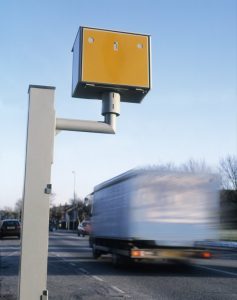
 When considering road-related breaches, driving too fast often springs to mind first. This prominence explains why speed cameras, which amount to more than 7,000 across our roads [1], are a typical focus for local highway authorities nationwide. There are 18 varieties of cameras deployed throughout the country [2], with the bright yellow rear-facing Gatso variant being the most familiar – usually found in towns and cities. It holds historical significance as the first model installed in the early 1990s on the M40. Likewise, HADECS models, mounted on motorway gantries and forward-oriented Truvelo designs that can photograph a driver head-on, are alternative variations in use, each serving a distinct purpose in inspecting and enforcing speed restrictions.
When considering road-related breaches, driving too fast often springs to mind first. This prominence explains why speed cameras, which amount to more than 7,000 across our roads [1], are a typical focus for local highway authorities nationwide. There are 18 varieties of cameras deployed throughout the country [2], with the bright yellow rear-facing Gatso variant being the most familiar – usually found in towns and cities. It holds historical significance as the first model installed in the early 1990s on the M40. Likewise, HADECS models, mounted on motorway gantries and forward-oriented Truvelo designs that can photograph a driver head-on, are alternative variations in use, each serving a distinct purpose in inspecting and enforcing speed restrictions.
Optics Within Speed Cameras
To function efficiently, speeding equipment depends on a variety of components, for instance:
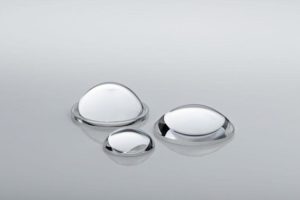 LENSES
LENSES
 Lenses are integral to capturing sharp visuals of vehicles under varying circumstances. They range from wide-angle types, which are ideal for overseeing numerous lanes and providing an expansive view of traffic, to infrared (IR) variants used in some devices. IR lenses, in particular, are optimal for detecting speed violations in low-light or night-time scenarios, ensuring consistent monitoring regardless of the time of day.
Lenses are integral to capturing sharp visuals of vehicles under varying circumstances. They range from wide-angle types, which are ideal for overseeing numerous lanes and providing an expansive view of traffic, to infrared (IR) variants used in some devices. IR lenses, in particular, are optimal for detecting speed violations in low-light or night-time scenarios, ensuring consistent monitoring regardless of the time of day.
POLARISERS
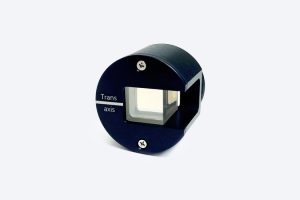 Polarisers are often utilised to reduce glare from vehicle surfaces or licence plates, making sure the captured image is unobstructed and legible.
Polarisers are often utilised to reduce glare from vehicle surfaces or licence plates, making sure the captured image is unobstructed and legible.
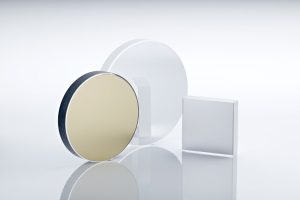
MIRRORS & BEAMSPLITTERS
 Mirrors and Beamsplitters are employed in some configurations to direct light paths or to capture multiple angles of a vehicle simultaneously.
Mirrors and Beamsplitters are employed in some configurations to direct light paths or to capture multiple angles of a vehicle simultaneously.
Stepping Up Surveillance
Speeding is just one of several factors contributing to accidents and fatalities.
Other significant risks include:
- Driving while under the influence of alcohol or drugs
- Using a phone while driving
- Failing to wear a seat belt.
These law infringements were traditionally spotted by alert police officers; however, highway authorities have recently brought on an additional method of vigilance to assist in recognising such offences.
AI and 4D Scanning in the Fight Against High-Risk Behaviours
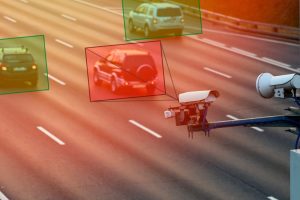 Artificial intelligence (AI) is increasingly being brought on board to flag up those engaging in reckless actions, like using phones and not fastening seat belts. A notable example is the
Artificial intelligence (AI) is increasingly being brought on board to flag up those engaging in reckless actions, like using phones and not fastening seat belts. A notable example is the  Acusensus Heads Up solution, a portable setup that underwent successful testing on the A30 near Launceston, a busy route in Devon and Cornwall. The network employs AI to pinpoint suspected violations, which are then verified by a person to confirm whether an offence has, in fact, occurred. Demonstrating its performance, the device detected 300 offences over a three-day period in the South West [3].
Acusensus Heads Up solution, a portable setup that underwent successful testing on the A30 near Launceston, a busy route in Devon and Cornwall. The network employs AI to pinpoint suspected violations, which are then verified by a person to confirm whether an offence has, in fact, occurred. Demonstrating its performance, the device detected 300 offences over a three-day period in the South West [3].
Taking it one step further, Kidderminster-based company Redspeed International has integrated AI with 4D scanning technology. The sophisticated setup has been implemented on the A23 in Lambeth, South London, where the high-resolution camera does more than merely measure the pace of a car, lorry, motorbike and the like. As well as singling out drivers on phones or not wearing seat belts, the leading-edge system can impressively ascertain the number of occupants inside a vehicle, offering a comprehensive overview of both road users’ mannerisms and occupancy [4].
Smart Brake Monitoring

 The latest breakthrough in fully implemented speeding tech, known as anti-braking speed cameras, is anticipated to be introduced in the UK following its triumphant deployment in Spain. The forward-thinking solution is designed to detect those who abruptly slow down prior to reaching a speed detection area, a common tactic among UK road users. Featuring cascading technology, they are also equipped to identify motorists who accelerate after passing the zone. This is achieved using a mobile radar device positioned a considerable distance from the fixed camera. Another unit is typically placed before the camera to catch those who sharply apply their brakes as they approach.
The latest breakthrough in fully implemented speeding tech, known as anti-braking speed cameras, is anticipated to be introduced in the UK following its triumphant deployment in Spain. The forward-thinking solution is designed to detect those who abruptly slow down prior to reaching a speed detection area, a common tactic among UK road users. Featuring cascading technology, they are also equipped to identify motorists who accelerate after passing the zone. This is achieved using a mobile radar device positioned a considerable distance from the fixed camera. Another unit is typically placed before the camera to catch those who sharply apply their brakes as they approach.
Societal Impact and Tomorrow’s Directions
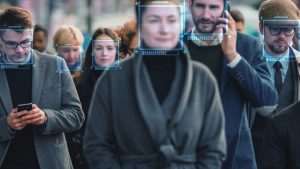 As we embrace these strides in road safety, it’s fundamental to consider the broader public influence. The application of AI and advanced optical technologies in roadway observation raises
As we embrace these strides in road safety, it’s fundamental to consider the broader public influence. The application of AI and advanced optical technologies in roadway observation raises  important questions about privacy and the balance between enforcement and civil rights. While they undeniably improve welfare and compliance on our streets, they also necessitate a discussion about the ethical use of data and the protection of individual privacy.
important questions about privacy and the balance between enforcement and civil rights. While they undeniably improve welfare and compliance on our streets, they also necessitate a discussion about the ethical use of data and the protection of individual privacy.
Looking ahead, things are steering to even more interconnected and intelligent systems, including potential integration with autonomous vehicles and real-time traffic management setups, promising safer roads and a more dynamic and responsive means of vehicular flow and urban planning. As these innovations evolve, so too must our policies and frameworks, guaranteeing they are used responsibly and effectively to benefit society as a whole.
Optics Enhancing Road Safety
It’s clear to see that optical components are essential in the realm of road safety. These components, like lenses and filters, are vital for the precision and efficiency of monitoring systems. Their ability to capture clear, accurate images under various conditions is what makes enforcement of traffic laws possible and practical.
As we look at what lies ahead, ongoing improvements and innovations will enhance current traffic monitoring methods and play a key role in developing new solutions for challenges. This continuous advancement underscores the importance of optics in our journey towards safer, more secure roadways for drivers and pedestrians alike.
FOOTNOTES:
[1] https://www.fuelcardservices.com/how-many-speed-cameras-in-the-uk-actually-work/
[2] https://www.thisismoney.co.uk/money/cars/article-12758495/Different-types-speed-camera-UK.html
[3] https://www.highwaysmagazine.co.uk/AI-camera-detects-300-offences-in-three-days/12444
The content & opinions in this article are the author’s and do not necessarily represent the views of RoboticsTomorrow
Comments (0)
This post does not have any comments. Be the first to leave a comment below.
Featured Product


